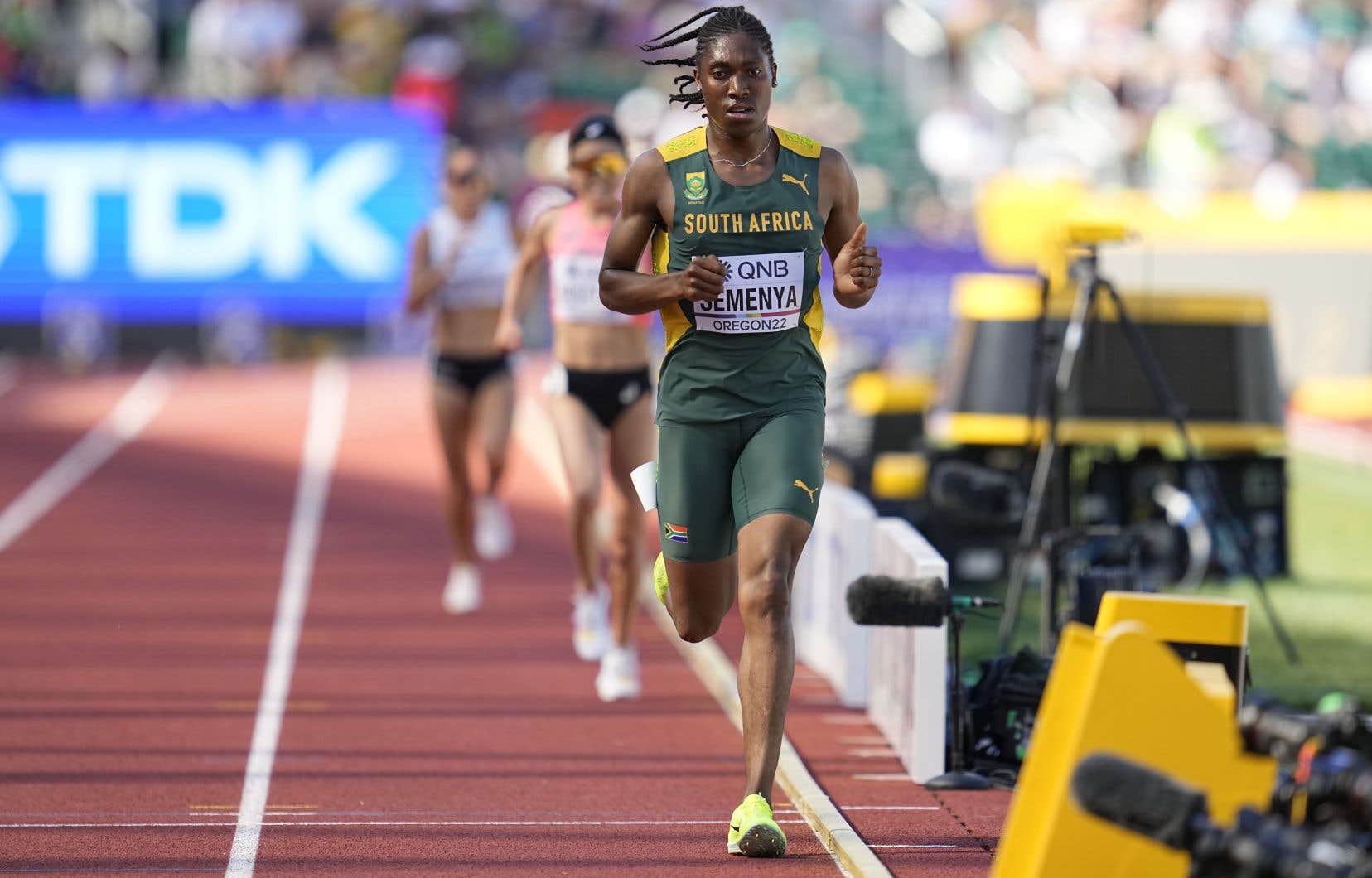South African athlete Caster Semenya, deprived of certain races because she refuses treatment to lower her testosterone levels, won a legal battle against Switzerland on Tuesday before the European Court of Human Rights (ECHR). ), who considers the 32-year-old athlete a victim of discrimination.
Swiss justice had confirmed in 2020 a decision of the Court of Arbitration for Sport (CAS) validating a regulation of the International Athletics Federation (since renamed World Athletics).
This forces the hyperandrogenic athlete, double Olympic champion in the 800 meter event, to take hormone treatment to lower her testosterone levels if she wants to match her favorite distance.
This judgment of the ECHR, however, does not invalidate the regulations of the World Athletics and does not directly open the way for Semenya to participate in the 800 meters without treatment. “Current regulations on DSDs [différences de développement sexuel]approved by the Council of the International Athletics Federation in March 2023, remains in place, “said the body.
“Switzerland has overstepped the reduced margin of appreciation it enjoyed in the present case, which concerned discrimination based on sex and sexual characteristics, which can only be justified by ‘very strong considerations'”, stated estimated the court based in Strasbourg.
“The significant stakes of the case for the applicant and the reduced margin of appreciation of the respondent State should have resulted in an in-depth institutional and procedural control, which the applicant did not benefit from in this case”, she continued.
Short majority
In a decision rendered with a narrow majority of four judges against three, the ECHR thus considers that Switzerland has violated article 14 of the European Convention on Human Rights, relating to the prohibition of discrimination, combined with the 8, which protects the right to privacy. Furthermore, there has also been a violation of Article 13 of the convention, relating to the right to an effective remedy.
“As the applicant did not claim any sum for pecuniary or non-pecuniary damage, the Court does not award any sum in this respect. However, the Court held (4 votes to 3) that Switzerland must pay the applicant 60,000 euros [87 502 $CA] for costs and expenses”, concludes the ECHR.
“The judgment vindicates the South African Athletics Federation, which has always maintained that the regulations were poorly designed, lacked a sound scientific basis and were highly discriminatory against athletes. female athletes with high levels of testosterone,” commented the federation in question.
Caster Semenya has a natural excess of male sex hormones. For more than ten years, it has been wrestling with the International Athletics Federation.
“World Athletics notes the decision of a very divided chamber of the ECHR, supported in reaction the international federation in a press release. Our view remains that the DSD regulations are a necessary, reasonable and proportionate means of protecting fair competition in the women’s category. »
Appeal to the Grand Chamber?
Caster Semenya, unable to run his favorite distance of 800 meters, had tried to convert to longer distances such as 5000 meters, initially not affected by DSD regulations. But World Athletics further tightened its rules in March for intersex athletes like Caster Semenya, who must now keep their testosterone levels below 2.5 nanomoles per liter for 24 months to compete in the women’s category, regardless of age. distance.
“Given the dissenting opinions in this decision, we will encourage the Swiss authorities to turn to the Grand Chamber” of the ECHR, its supreme formation which officiates as a court of appeal and renders final decisions, continues the International Federation.
“Victory, the ECHR rules in favor of Caster,” said Indian researcher Payoshni Mitra, one of the leaders of the Center for Sport and Human Rights, Caster’s longtime supporter, on Twitter. Semiya. ” It is enormous. The sports world must pay attention to this landmark decision, as well as the countries of Western Europe where most sports institutions are based. »
